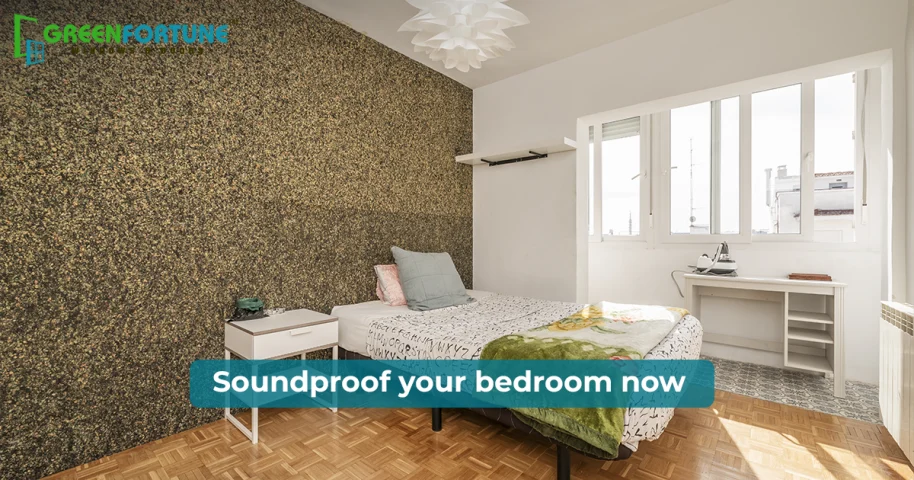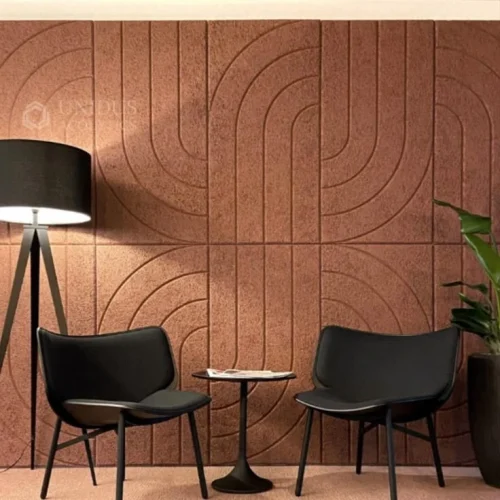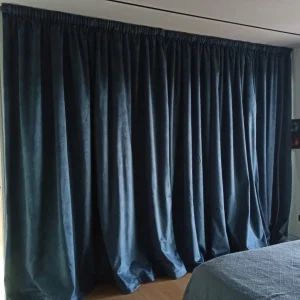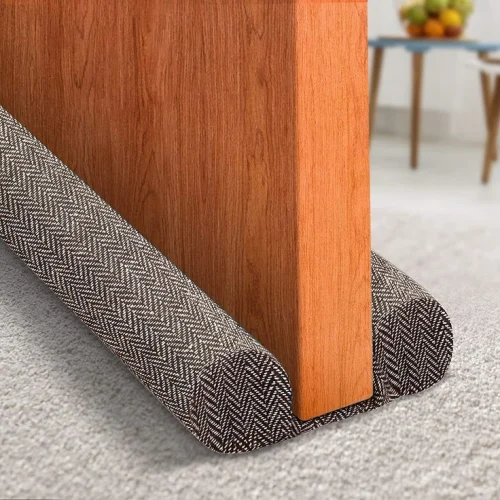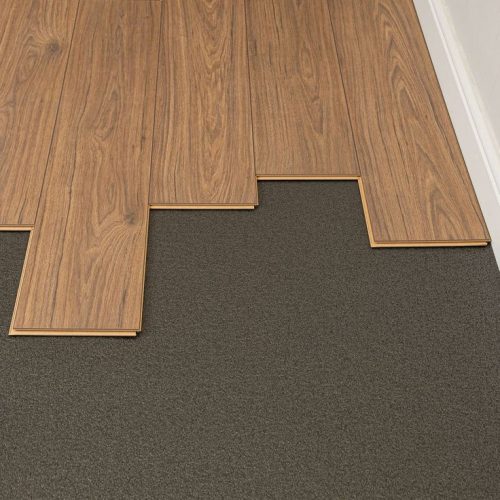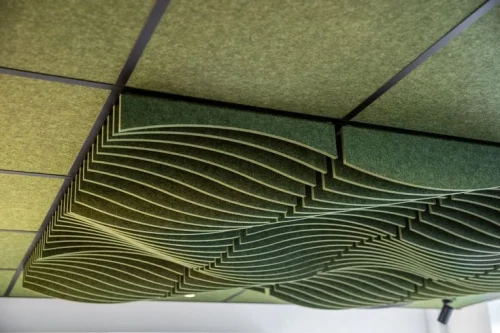
Privacy Window Design Ideas for Urban Living
June 10, 2025
UPVC vs Aluminium Windows Comparison: Which One Should You Pick in 2025
June 11, 2025A peaceful night’s sleep isn’t just about a comfortable mattress or blackout curtains—it’s also about controlling the noise around you. Whether it’s the sound of traffic, loud neighbours, or even a snoring partner, noise can disrupt your rest and affect your well-being. That’s why more homeowners are now exploring soundproof bedroom design to create calm, restful environments that truly feel like a sanctuary.
In this guide, we’ll walk you through practical and stylish ways to block, absorb, and reduce noise inside your bedroom. From acoustic wall panels to noise-reducing windows, you’ll find everything you need to know to build your quiet escape.
Why Does Soundproofing Matter in a Bedroom?
Before we get into the how, let’s address the why. Poor sleep affects everything — your focus, immunity, mood, and even long-term health. While light and temperature are common concerns, noise pollution is an underrated sleep disruptor.
A study by the World Health Organization found that prolonged exposure to noise, especially at night, can increase stress hormones and lead to sleep fragmentation.
A well-planned soundproof bedroom design reduces the level of ambient noise entering your room and minimizes internal echoes, creating a calming space that supports uninterrupted rest. Whether you’re a light sleeper or someone working odd hours, these changes can significantly improve your sleep hygiene.
Core Elements of a Soundproof Bedroom Design
Let’s break down the key elements that make a soundproof bedroom design effective and long-lasting.
1. Walls
Most sound enters a bedroom through the walls — either directly from outside or from adjoining rooms. Here’s how to reduce that impact.
- Add Mass with Insulated Drywall or Panels: Thicker, denser walls naturally block more noise. If you're renovating, consider double-layering drywall with insulation in between. Even a single layer of acoustic wall panels can make a noticeable difference.
- Use Acoustic Wall Panels: These are specifically designed to absorb sound waves and reduce echo. Available in various materials like foam, fabric, or wood-fiber composites, acoustic wall panels don’t just dampen noise — they can also add a stylish texture to your room.
- Fill Gaps and Cracks: Tiny gaps in drywall or between wall panels can act like mini sound tunnels. Seal them with acoustic caulk to minimize leaks.
2. Windows
Windows are one of the biggest weak points when it comes to soundproofing.
- Invest in Noise-Reducing Windows: If you're building or remodeling, opt for noise-reducing windows. These are usually double-glazed or laminated to block more external noise. They’re especially useful if your bedroom faces a street, railway line, or crowded neighborhood.
- Add Soundproof Curtains: Heavy blackout curtains lined with sound-absorbing materials can reduce outside noise significantly. Look for multi-layered options with thermal insulation for added comfort.
- Seal the Edges: A well-fitted window frame matters just as much as the glass itself. Use weather stripping and acoustic sealants to close off any gaps between the window and the wall.
3. Doors
Standard interior doors are often hollow and not designed to block sound. Here’s how to fix that.
- Replace with Solid-Core Doors: Upgrading to a solid-core wooden or composite door adds density, reducing the sound passing through.
- Add Door Sweeps and Seals: Install a rubber door sweep at the bottom and weather seals around the edges. This blocks noise (and even light) from entering through gaps.
- Use a Soundproofing Blanket: For a quick fix, especially in rented spaces, hang a thick quilted blanket over the door at night. It’s not pretty, but it works.
4. Flooring
Hard flooring like tiles or wooden planks can cause sound to bounce around, especially in small bedrooms.
- Layer with Rugs or Carpets: A thick rug — preferably wool or shag — helps absorb footstep noise and muffles echoes.
- Add Underlay: If you’re installing new flooring, use an acoustic underlay. This adds a layer of insulation between the floor and subfloor, reducing noise transfer to or from the room below.
5. Ceiling
Especially in apartments or shared houses, noise from upstairs can be a major issue.
- Install an Acoustic Drop Ceiling: These are secondary ceilings that hang below your existing one and are filled with sound-absorbing tiles.
- Add Insulation Between Joists: If you're in a position to open up the ceiling, fill the space with soundproof insulation like mineral wool.
6. Interior Decor Choices That Support Soundproofing
Believe it or not, the right decor can also reduce noise levels.
- Upholstered Furniture: A fabric headboard or padded bench doesn’t just look elegant — it also absorbs sound.
- Wall Hangings and Bookshelves: Filled bookshelves along the wall can act as natural sound barriers. Heavy tapestries and woven art can also help dampen reverberation.
- Plants and Soft Furnishings: Adding indoor plants, thick curtains, layered bedding, and plush cushions all contribute to a quiet home idea that softens sound naturally.
DIY vs. Professional Soundproofing
DIY soundproofing focuses on quick, low-cost fixes using everyday materials, while professional soundproofing provides custom, long-term solutions based on expert assessment.
Feature | DIY Soundproofing | Professional Soundproofing |
Cost | Low to moderate | High (depending on scope and materials) |
Installation | Easy, renter-friendly | Requires skilled labor and structural adjustments |
Common Methods | Curtains, door seals, rugs, and acoustic panels | Insulation, soundproof drywall, and decoupling systems |
Effectiveness | Moderate noise reduction | High, with tailored solutions |
Best For | Light noise, small spaces, temporary fixes | Persistent or loud noise, permanent setups |
Custom Design | Limited | Fully customized based on room acoustics |
Damage to Structure | Minimal or none | Possible minor changes (approved for owned homes) |
If you're renting or just starting, DIY soundproofing is a great first step. However, for maximum noise control, especially in busy urban areas, professional soundproofing provides a more reliable and long-term solution.
Creating a Quiet Bedroom in Small Spaces
Don’t have the luxury of major renovations? Here are some quiet home ideas that work even in compact rooms:
- Use white noise machines to mask ambient sound
- Rearrange furniture to block shared walls (like placing a wardrobe between rooms)
- Use bookshelves or large tapestries along the noisiest walls
- Install peel-and-stick acoustic tiles for renter-friendly upgrades
Final Thoughts
A quiet bedroom can make a huge difference to your sleep and your overall health. With the right soundproof bedroom design, you can block outside noise, reduce echoes, and build a peaceful space just for you. From acoustic wall panels to noise-reducing windows, small changes can help you get the rest you deserve.
Whether you're building a new home or upgrading your current one, soundproofing is one investment that pays off every single night.
Design Your Bedroom Better With GreenFortune
If you’re tired of repainting wooden frames or dealing with rusted metal windows, it’s time for an upgrade. GreenFortune’s uPVC windows and doors are a hassle-free solution that brings elegance and efficiency to any living space.
They don’t warp, don’t rot, and are built to withstand the test of time, no matter the climate. Discover how thousands have simplified their homes with GreenFortune’s trusted designs.
FAQs
- Can I soundproof my bedroom without major renovation?
Yes, you can use soft furnishings, door seals, thick curtains, and acoustic wall panels to reduce noise without changing the structure. Even small steps like sealing gaps and placing rugs can help. These are especially useful for rented homes or tight budgets. - How effective are acoustic wall panels for bedrooms?
Acoustic wall panels absorb sound waves, which helps reduce echo and background noise. They’re especially helpful if your bedroom has hard floors or high ceilings. Many modern panels are also stylish and can enhance your décor.
3. Are noise-reducing windows worth the investment?
Absolutely. Noise-reducing windows block out street sounds and help maintain a consistent indoor temperature. They’re ideal for homes in busy areas and offer both comfort and energy efficiency.







